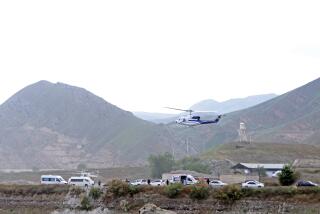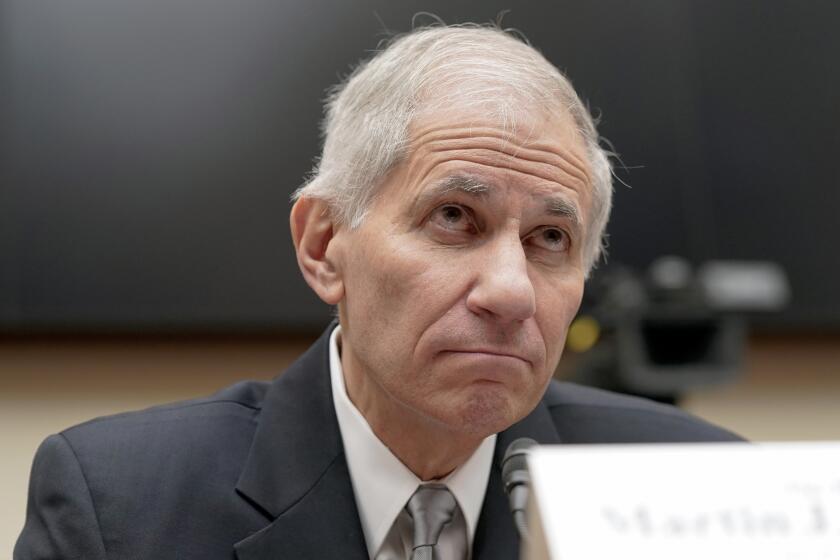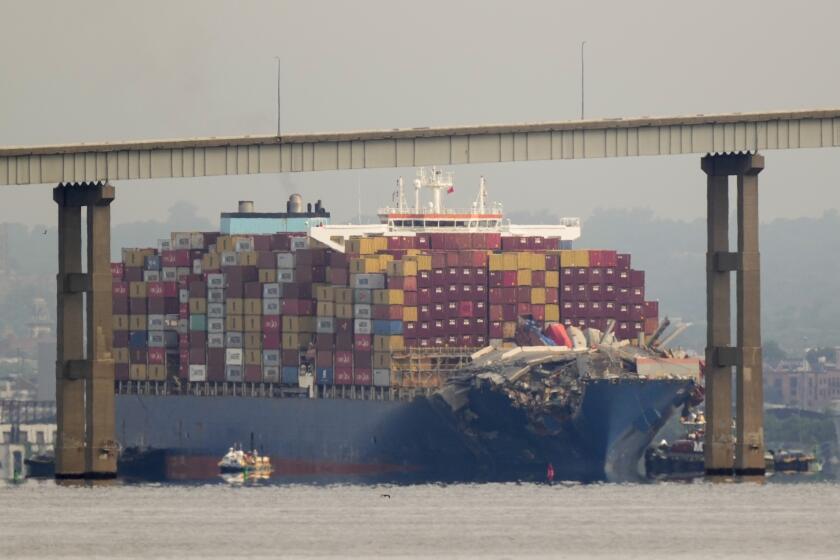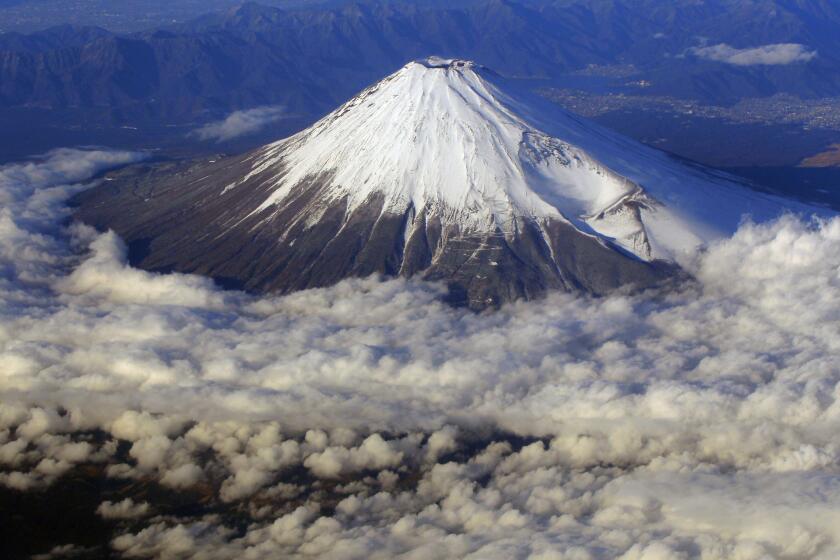India’s Last Frontier Racked by Factionalism
Joined by just a thread of land to the rest of the country, India’s last frontier is an isolated region of rugged beauty and constant turmoil.
For 50 years, the Indian northeast has been tormented by separatist insurrection, guerrilla warfare and terrorism. Its inhabitants--nearly half of them from aboriginal tribes--are still uncertain of their place, whether within India or outside it.
When some insurrections wane, others flare. Wars erupt among the tribes, even while those tribes battle the Indian government. Factions fight rivals among their own people. Drug abuse and AIDS are rampant. Even the elephant herds, the largest remaining in India, are in a perpetual struggle with poachers and ever-encroaching mankind.
Arms flow in from neighboring Burma. Guerrillas retreat to camps in Bhutan or Bangladesh. Indian intelligence sources claim banks in Bangladesh hold more than $100 million extorted as “taxes” from the northeast region’s merchants and tea plantation owners.
The rebels have no chance of defeating the Indian army. But the northeast’s troubles are part of the centrifugal tugs on India’s multitude of peoples, reinforcing fears of disintegration that have haunted it since the subcontinent was partitioned into India and Pakistan in 1947.
It is just as deadly as Kashmir, where a seven-year-long Muslim revolt against India has garnered international attention because of Pakistan’s involvement and the threat that it could ignite a fourth Indo-Pakistan war.
Almost daily, someone is killed in one of the seven northeastern states. But the region is so remote that rarely do such acts of political violence draw national attention or concern.
An exception came Dec. 30, when militants of the Bodo tribe blew up a New Delhi-bound train, killing at least 34 people near Kokrajhar in the state of Assam, 700 miles from the Indian capital.
The same week, two other explosions, also claimed by the Bodoland Liberation Tiger Force, sabotaged road and rail bridges, briefly severing land links to the northeast and demonstrating how vulnerable the territory is.
On Jan. 22, the Tiger Force announced a cease-fire, but rival Bodo groups did not respond to a government offer for talks.
Massacres have occurred in other northeast states as well. In Nagaland, ethnic Naga rebels waylaid a bus and shot dead 30 passengers from the Kuki tribe on Dec. 9. In Tripura four days later, tribal insurgents raided a non-tribal village and slaughtered 25 men, women and children.
The core of the unrest is migration that threatens ethnic identities and upsets a balance existing for hundreds of years, when tribal chieftains ruled once-proud kingdoms.
Many tribal people of the northeast, whose Mongoloid features distinguish them from other Indians, feel themselves a people apart, ethnically closer to Southeast Asians.
But not all the rebels are from backward tribes. The most powerful guerrilla force is the United Liberation Front of Assam. It is drawn from people who identify themselves as Assamese, a racial concoction of southern and northern Indians and Mongoloid tribes, who have come to dominate the region’s biggest state.
Beginning 170 years ago, British rulers imported Indian labor for their lush tea plantations. More recently, poverty and war drove people from the deltas of Bangladesh to India’s northeast--an estimated 5 million illegal immigrants from 1961 to 1991.
Fueling the resentment is a self-perpetuating cycle of under-development. Rebels say the government strips the region of its resources--Assam supplies half of India’s oil and 15% of all the world’s tea--but plows little back by way of profits or investment.
“This is the most neglected and exploited region in India,” says Sarbananda Sonowal, president of the powerful Northeast Students Union, reflecting the one view on which all sides agree.
Prime Minister H.D. Deve Gowda acknowledged recently that people in the northeast feel New Delhi treats them like stepchildren and pledged to provide basic services to bring the region “to the standard in the rest of the country.”
Ideologies of the insurgents often are murky. Most groups want the “foreigners” expelled. Some tribal insurgents want their own states within India that would give them greater self-rule and control of resources. Others want independence.
The northeast is linked to the rest of India by what’s known as the “chicken neck,” a 12-mile-wide strip that separates Nepal from Bangladesh. That broadens into a corridor 50 miles wide in the Brahmaputra River Valley occupied by the Bodos.
For 30 years the Bodos have demanded autonomy to safeguard their language, customs and self-identity from being overwhelmed by the Assamese.
In 1987, the struggle turned violent. The Bodos say 1,200 of their people were killed by Indian security forces before an autonomy agreement was signed in 1993. The accord was never carried out, and the Bodos renounced it last year.
“The government of India only understands the language of the gun,” says U.G. Brahma, president of the All Bodo Students Union. “If we go in a democratic, civilized manner, the government will not give us any importance.”
But the Bodos are riven by factionalism. The divide is evident in villages near Kokrajhar, in the heart of the would-be Bodoland, with fresh-painted graffiti proclaiming allegiance to one rival group or another.
On Nov. 19, a truck packed with two dozen men armed with assault rifles drove into the market of Banargaon, a village of thatched-roof houses shaded by bamboo and coconut trees. Jumping to the ground, they fired into the crowd.
“They didn’t say anything. They just started shooting. We ran down the road. They chased us to the end of the village. Then we scattered into the fields,” says Jubiraj Basumatary, a 26-year-old student whose uncle was among the nine dead.
The Bodos were latecomers to the tribal revolts. Rebellions began as early as India’s independence in 1947 when the Nagas--once headhunters converted to Christianity by missionaries 100 years ago--rejected their inclusion in the new Indian federation.
When India carved a separate Nagaland state out of Assam in 1961--what many Bodos demand for themselves today--even that failed to satisfy the radical Naga movement, now considered the godfather of all the rebel groups.
“It is a nationality question, compounded by economics,” says Naorem Sanajaoba, dean of the law faculty at Gauhati University who comes from the state of Manipur.
Manipur, whose lawless jungles are becoming a major conduit of high-quality drugs from Burma to the West, had a 2,000-year history as a kingdom, with a constitution adopted in 1180, Sanajaoba says.
“Manipuris are not demanding secession from India, only the restoration of their lost independence,” he says.
More to Read
Start your day right
Sign up for Essential California for news, features and recommendations from the L.A. Times and beyond in your inbox six days a week.
You may occasionally receive promotional content from the Los Angeles Times.






